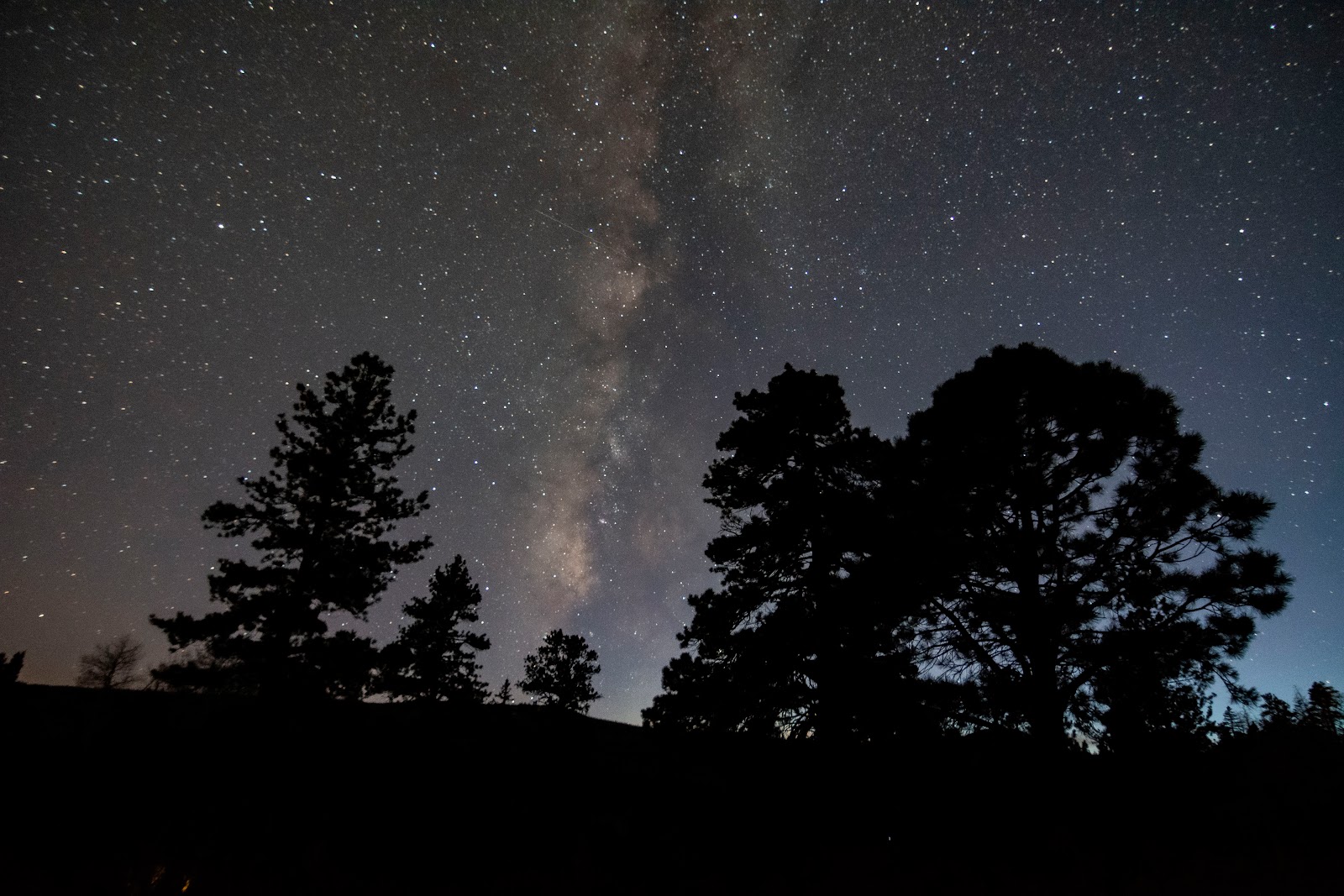Introduction
The second half of November brought more cloudy skies and snow to Utah. The temperatures also declined slightly, making stargazing a little more unpleasant. Even under these conditions, I could see Jupiter and Saturn in the evening sky, with an 80% lit Moon between the pair on the 22nd. Venus and Orion were easily visible in the early morning sky before sunrise.
Aside from colder weather and more snow, December also brings the return of two meteor showers, the Geminids and the Ursids. No planets will reach opposition this month, but three asteroids will. However, a telescope and a star chart is recommended to see them. The winter solstice will also occur this month, marking the time when the daylight hours begin to lengthen and the hours of darkness grow shorter.

Meteor Showers and Asteroids

Meteor Showers and Asteroids
December will offer plenty for interested observers to view. Unfortunately, most of these events occur later in the month when most individuals are busy with holiday plans. Nevertheless, the Geminid Meteor Shower will peak on the 14th under a Moon-free sky. Observers can expect approximately 150 meteors per hour radiating from the constellation Gemini.
The second meteor shower will peak on the 22nd but may be subpar due to a 74% lit Moon in the sky. The Ursids can produce up to 10 meteors per hour, but outbursts have occurred with rates of up to 25 meteors per hour. Look towards Ursa Major to view these meteors.
Three main belt asteroids will reach opposition this month, beginning with Vesta. Each asteroid will require a pair of binoculars to view, but I highly recommend a telescope and a star chart (or phone app). Vesta can be found on the border of Orion and Gemini on the 21st, its date of opposition. Use Betelgeuse and Saiph (the star that represents the knee of Orion) to form a line towards Vesta. A star chart is helpful so that it can be compared to the field of view, so the observer knows which point of light is the asteroid.
The next asteroid to reach opposition is Metis. This occurs on the 22nd. Follow the line formed with Saiph and Betelgeuse and continue through Vesta to reach Metis. Again, a star chart will be helpful to compare this region of the sky with the field of view through a telescope. The "extra" point of light will be Metis.
The final asteroid to reach opposition this month is Astraea. This opposition will occur on the 27th. On this date, an observer can form a line through Rigel and Betelgeuse and continue towards Gemini. On the border of these two constellations, the observer will notice a point of light that does not appear on star charts. This is the asteroid Astraea. An observer can also view the region of the sky where these asteroids are located and notice them move over different nights.
December 04: Mercury reaches greatest eastern elongation
December 05: Last Quarter Moon🌗
December 09: Moon passes within 4° of Venus
December 12: New Moon 🌑
December 13: Moon passes within 4° of Mercury
December 13/14: Geminid Meteor Shower peaks 🌠
December 17: Moon passes within 2° of Saturn
December 19: Moon passes within 2° of Neptune
December 19: First Quarter Moon 🌓
December 21: Asteroid Vesta reaches opposition
December 21: Winter Solstice
December 21/22: Ursid Meteor Shower peaks 🌠
December 22: Asteroid Metis reaches opposition
December 22: Moon passes within 3° of Jupiter
December 23: Moon passes within 3° of Uranus
December 26: Full Moon 🌕
December 27: Asteroid Astraea reaches opposition









No comments:
Post a Comment